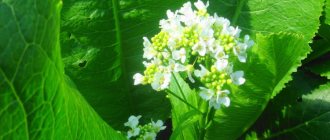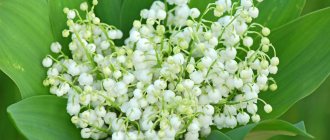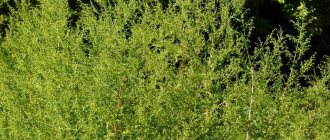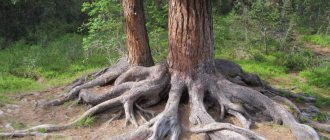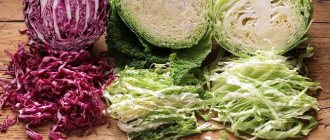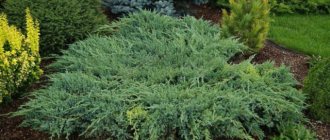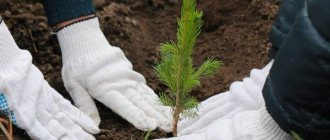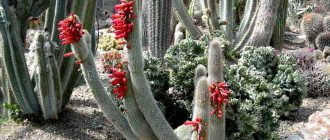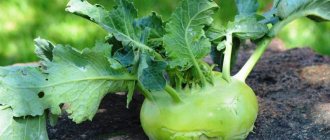One of the most mentioned traditional medicines is a perennial plant with a colorful name - burnet. Its healing capabilities became known back in ancient times. It prefers moist soils on the coasts of rivers and reservoirs, and swampy areas, but is also found in fairly dry regions, mainly in the northern hemisphere.
Unpretentious to weather conditions, frost-resistant. In addition to its invaluable medical qualities, in our time landscape designers and gardeners have appreciated the decorative advantages of some of its species.
Looking at the photo of a blooming burnet, neatly inscribed in a garden composition, you wouldn’t even say that this graceful creature has such power.
Botanical characteristics
Burnet is a decorative perennial. It is fed by a thickened, woody rhizome covered with dark brown, cracked bark. It grows up to 12 cm in length and is located horizontally or diagonally in the soil. Many fibrous processes extend from the thick root.
Herbaceous shoots with sparse branches grow up to 150 cm in height. They are covered with petiolate, odd-pinnate leaves. The largest foliage is collected at the base into a loose rosette. Along the length of the stem there are alternately smaller leaves. The ovoid-shaped leaf blade is colored bright green or bluish-green. Its folded surface is dotted with a relief network of veins and has crenate edges.
The flowering period occurs from July to September and lasts up to 65 days. The dark red, pink or white flowers are pressed tightly together at the top of a bare peduncle. They form a capitate or spike-shaped inflorescence 1-3 cm long. Bisexual flowers have no petals and consist of 4 bracts and 4 stamens. In the center there is a club-shaped pistil with a lower ovary.
After pollination, single-seeded small nuts about 3 mm long ripen. They are covered with smooth light brown skin and are pear-shaped.
Types and decorative varieties
In total, there are less than 20 species in the genus Sanguisorba. Only a few of them are found in culture.
Officinalis burnet. This medicinal plant is listed in the Red Book in many regions. It has tall, erect herbaceous shoots of light green color. The basal leaf rosette consists of odd-pinnate leaves with ovate, toothed lobes. The sessile stem leaves are arranged alternately. Many small flowers are collected in dense spike-shaped inflorescences of burgundy or purple hue. Varieties:
- Pink Tanna – slender thickets with lush drooping pink ears;
- Tanna - compact bushes up to 80 cm high bloom dense, hard inflorescences of scarlet or burgundy color.
Burnet, officinalis.
Burnet, obtuse. An alpine plant native to Japan. It grows up to 1 m in height and is distinguished by large, fluffy inflorescences on drooping peduncles. The flowers themselves are painted bright pink. The stems branch from the base and are covered with small feathery leaves of gray-green color. An interesting variety is “Alba” with lush snow-white inflorescences.
Dull burnet
Menzies burnet. This ornamental plant forms a dense basal rosette of odd-pinnate gray-green leaves up to 25 cm long. Lush bright pink brushes of inflorescences bloom on bare, erect peduncles 60-120 cm high. Their length reaches 7 cm. Flowers bloom in June.
Menzies burnet
Alpine burnet. The plant, 40-80 cm high, is densely covered with oval or heart-shaped leaves of a bright green hue. The dense yellowish-green inflorescences in June are only 2-3 cm in length, but gradually become more magnificent and stretch up to 8 cm.
Alpine burnet
Reproduction methods
Burnet propagation is carried out by seeds and root segments. Seeds are immediately sown in open ground. Crops are done before winter. To do this, select open areas with fertile, well-drained soil. Seed material is evenly distributed into shallow holes and sprinkled with 5-10 mm of peat. In spring, seedlings appear and develop well. They are not afraid of weeds and periodic cold snaps. Until the beginning of autumn, seedlings grow in one place, then they are carefully dug up with a lump of earth and planted around the site. The distance between young bushes should be 50-60 cm. Their flowering occurs at 2-3 years of age.
The root of an adult plant (from 5 years old) is quite massive and branched. In May-August it can be divided into parts, but a small number of divisions are obtained. They try to carefully dig up the plant so as not to damage it. Using a sterile sharp blade, cut the root into pieces so that each has a growing point. The sections are dipped in crushed ash and the plants are planted in a new place.
Recipes with burnet for the treatment of various diseases
The dried roots and rhizomes are ground to a powder. In this form it is used to prepare decoctions, infusions and tinctures:
- Burnet is used as a decoction for diarrhea. To prepare it, you need 1 tbsp. l. Pour boiling water over the vegetable raw materials and keep on low heat for half an hour. Then infuse for 2-3 hours and filter. For children, the medicine is prescribed 1 tsp. 4 times a day half an hour before feeding or after 2 hours. If the stool is restored, the decoction is continued to be taken to completely normalize the microflora.
- When treating cervical erosion, a decoction of burnet is used for douching. Need 1 tbsp. l of crushed roots, pour 250 ml of water and boil over low heat for half an hour. Leave in a thermos for 4 hours, strain. For each procedure, use a freshly prepared decoction. Do not use during menstruation and a week before and after it.
- The same decoction is used in oncology in the treatment of malignant tumors, including breast cancer. Take 3 times a day, 1 tbsp. l. before meals, and also apply lotions and compresses to the affected areas. The product reduces the activity of pathogenic cells, preventing their division and growth.
- Trophic ulcers, purulent wounds, bedsores, burns and other mechanical damage to the skin are treated with a high concentration decoction. To prepare it, take 2 tbsp. l. raw materials and pour 200 ml of boiling water. The mixture is covered with a lid and simmered in a water bath for half an hour. The broth is cooled and filtered; the evaporated liquid is replenished to the previous volume with cold boiled water.
- To prepare an infusion of burnet, take 1 tbsp. l. powder from its rhizome, add 300 ml of water and leave for 8-10 hours. In terms of concentration, this remedy will be less saturated than a decoction, but richer in composition, because it preserves those substances that are destroyed during heat treatment. Drink 1/4 cup 3 times a day for gastrointestinal infections, purulent conjunctivitis, and infectious sore throats.
- Burnet tincture is prepared with vodka or medical alcohol diluted to 40%. Crushed roots in an amount of 20 g are poured with 200 g of vodka or alcohol and left in a dark place for 2 weeks. The filtered tincture is taken 15 g (1 tbsp) 5-6 times a day. It helps with pulmonary, gastric, uterine bleeding, and increases blood clotting.
- A tincture prepared from 100 g of plant material and 400 g of 70% alcohol has a quick therapeutic effect. It is kept for 10 days in a dark place, then filtered. The product is taken in 1 tbsp. l. before eating. It helps well with colitis and bloody diarrhea. To prepare a larger medicine, take a 3 liter glass jar, fill it halfway with plant materials and add alcohol to its full volume. After 30 days, the product can be used for treatment, but it will only be infused until it is completely ready after 3 months.
- Plant raw materials are used in complex medicinal preparations. For fibroids, a decoction is prepared which contains several plant components: burnet rhizome, boron uterus, oak bark, wormwood herb, aspen bark, bergenia roots. All components are mixed in equal proportions. 3 tbsp. l. collection, pour 1 liter of boiling water. The broth is boiled for 20 minutes and infused for 6 hours in a warm place. The product is used for douching, and during exacerbations, 1-2 tbsp is taken orally. l. 3 times a day on an empty stomach. Treatment is stopped a week before menstruation.
Pilea monetifolia and small-leaved, other species - care at home
The finished tincture can be purchased at pharmacies. A single dose of medication is 30-50 drops. The exact dosage, dosage regimen and course duration are prescribed by the doctor.
Hematomas and swelling resulting from bruises and blows go away faster if crushed root wrapped in gauze is periodically applied to them, which is first kept in boiling water for about half an hour.
Burnet herb is not a panacea, but with complex treatment it has a great therapeutic effect.
Growing and care
Burnet is considered a tenacious and unpretentious plant. It successfully competes with weeds and requires minimal care. It is better to plant it in open areas or in partial shade. The soil for planting should be nutritious and well-drained, sufficiently moist, but without stagnant water. Neutral or slightly acidic compositions with a high humus content are suitable.
Caring for the plant comes down to regular watering, because burnet in nature lives near water and does not tolerate drought well. It needs to be irrigated often. Loves burnet and fertilizers. The first feeding with a mineral complex is carried out immediately after the thaw. Then organic and mineral fertilizers are alternated 2-3 times per season. Solutions are poured into the ground near the roots.
The soil of the plant must be periodically loosened, removing weeds and breaking up the crusts on the surface. Tall flowers can bend under their own weight and lean towards the ground from the wind. To preserve their decorative appearance, they are tied up or planted near bushes. The plant can self-sow abundantly, therefore, to prevent uncontrolled spread, it is necessary to immediately cut off the fading inflorescences. All types of burnet are resistant even to severe frosts, so they do not need additional shelter for the winter.
The burnet is extremely rarely affected by diseases and pests. If the foliage has acquired a mosaic pattern or weeping spots appear that smell of rot, the bush must be pruned and treated with a fungicide. When there is an invasion of parasites, which most often move from infected neighboring plants, spray with an insecticide.
Choosing a landing site
It should be said that the area for planting burnet requires an open, sunny area, but partial shade is also allowed. The soil should be loose, well-drained and fertile. If the soil is depleted, add humus or compost to the soil in the spring; granules of complex mineral fertilizer can be added to the planting holes.
The moisture capacity of the soil is important, but stagnation of moisture is not welcome; do not plant in lowlands and flooded areas. The reaction is suitable for slightly acidic and neutral soils.
Burnet in the garden and kitchen
Large green bushes are planted on the sides of paths, near the walls of houses and outbuildings, and also in a group in the middle of the lawn. Even without flowers, dense greenery perfectly decorates the area, reminiscent of hosta thickets. The unusual bright flowering continues for quite a long time. Inflorescences on long peduncles are suitable for decorating the background of a flower garden, and low-growing varieties are used to decorate an alpine hill or create a flower bed in a natural style.
Burnet is planted next to cereals, meadowsweet, lilies, highlanders, astilbe and basilisk. Thickets of decorative leaves are good in the fall, when they change their color from rich green to yellow and orange and do not fall off for a long time. The inflorescences retain their decorative appearance for a long time and after cutting, they can be used to make bouquets.
In addition to its decorative properties, burnet is actively used in cooking. Fresh leaves smell like cucumber. They are used to make cocktails, complement salads and fish dishes. But large rhizomes are cleaned and boiled as a side dish for meat dishes. In some Asian countries, aromatic tea is brewed from dried leaves and roots.
Chemical composition and procurement of raw materials
It’s not for nothing that the burnet has such an unusual name, because it can stop almost any bleeding and fight vascular diseases. The roots of the plant have the greatest value in medicine. They contain the following active substances:
- organic acids (break down fats, salt deposits and normalize the acid-base balance);
- tannins (improves digestion, slows down the development of bacteria and inflammatory processes in the body);
- starch (reduces cholesterol levels in the blood, stimulates insulin production, has an enveloping property);
- ascorbic acid (strengthens the immune system, stimulates liver function and collagen production);
- sterols (reduce appetite, allergies and normalize heart function);
- pictures (normalize metabolism, stimulate the formation of bone tissue, reduce the risk of tumor formation);
- essential oil (calms the nervous system, increases intestinal motility, harmonizes metabolic processes in the body);
- microelements and macroelements (regulate metabolic processes, increase immunity, normalize the functioning of all body systems).
Medicinal raw materials are harvested in August-September, when the flowering process is completed and the seeds begin to ripen. Only strong plants over 5 years old are suitable for these purposes. The roots are completely dug up, cleared of soil and small sections are replanted so that the plants continue to develop.
The rhizomes are thoroughly washed in cold water, dried in the fresh air under a canopy, and then the remaining stems are cut off. The roots themselves are cut into narrow strips and dried in the sun or in drying cabinets at a temperature not exceeding 45°C. At higher temperatures, the roots turn black and lose their beneficial properties. Finished raw materials are stored in fabric bags or paper bags for up to 5 years.
Is it possible for children?
Burnet is allowed in childhood, starting from birth. Drinks made from rhizomes are recommended for diarrhea and other intestinal infections. The healing remedy will cleanse the body of harmful bacteria and viruses, improve the functioning of the digestive tract, restore the intestinal microflora, and also have a disinfecting effect.
The daily intake for children under 1 year should not exceed 200 ml, for older children - 400 ml.
Decoction for infants:
- Preparing the drink. 2 tsp. roots pour 1 tbsp. boiling water, simmer for 30 minutes, filter without insisting.
- Application. 25 drops drink is diluted in 1 tsp. cooled boiled water and give it to drink 30 minutes before meals 4 times a day. Duration - until complete recovery and then another week to consolidate the result.
- Effect. The baby's stool returns to normal and intestinal colic goes away.
Infusion for children over one year of age: steam 2 tbsp with a glass of hot water. l. ground roots, heat for 30 minutes, leave to brew for 1.5 hours, filter. Give 5 ml 4 times a day until complete cure, then continue the course for another week, reducing the frequency of doses first to 3, then to 2 times a day.
Burnet is recommended in the treatment of stomatitis (sore throat) and conjunctivitis in children:
- For the oral cavity. 1.5 tbsp. l. boil the roots in 200 ml of liquid, heat for 10 minutes, leave for 30 minutes, filter. Rinse up to 5 times a day.
- For eyes. Steam 1 tbsp with a glass of water. l. ground rhizomes, leave to simmer for 15 minutes. Leave for 2 hours, filter. Wipe both eyes with a sterile cloth soaked in the prepared product, up to 5 times a day.
What and how to treat burnet
Burnet has hemostatic, astringent, antimicrobial, antispasmodic, tonic, wound-healing and strengthening properties. Preparations from burnet roots are taken orally and used externally.
Fresh decoctions are prepared daily. Up to a teaspoon or tablespoon is prescribed orally up to five times a day. They can be taken from infancy to strengthen the immune system, fight diarrhea, and reduce intestinal motility. Externally, decoctions are used to treat inflammation of the skin. In gynecology, tampons soaked in decoction are used to combat pathogenic microbes during vaginitis. Tea is made from leaves and flowers. It alleviates the condition of hemoptysis, tuberculosis, headaches and gum tumors.
To prepare an alcohol tincture from the roots, you need to pour 3 tablespoons of the raw material into a glass of vodka and leave in a dark place for 21 days. The drug is taken orally drop by drop several times a day to reduce bleeding during menstruation, as well as during hypertensive crises, blood clots in blood vessels, and hemorrhoids. The tincture diluted with water is used to treat the skin and mucous membranes for conjunctivitis, stomatitis, gingivitis and periodontal disease. Lotions are applied to damaged areas of the skin to relieve inflammation and irritation.
Burnet has no contraindications. Give it with caution to people with allergies, pregnant and lactating women, and children. To benefit from treatment, you should consult with your doctor and create a treatment plan together.
A little history
There is no mention in ancient authors of the use of burnet. The first mentions in Europe date back to the era of Charles V, when it was used to expel worms from horses. Since the Middle Ages, its hemostatic and astringent properties have been mentioned. The earliest information in printed sources about the use of burnet in medicine dates back to 1550. The primary source reports its use as a hemostatic agent for bloody diarrhea and excessively heavy menstruation. Actually, the literal translation of its Latin name speaks of the ability to stop bleeding. It is mentioned in the works of Lonicerus and Mathiolus, who also note mainly hemostatic properties and are recommended, among other things, for “women’s diseases.” Externally, Mattiolus recommends using the decoction as a wound healing agent for fistulas and cancer.
Burnet (Sanguisorba officinalis) | Burnet (Sanguisorba officinalis) |
N. Kulpeper, who examined the effect of plants under astrological sauce, believed that this plant, with long-term use, strengthens the body and soul. Preparations from rhizomes were considered a cooling, astringent and wound-healing agent, useful for inflammatory and pulmonary diseases (including tuberculosis), and gastric bleeding. They were also used to maintain pregnancy.
In Russia, especially in Siberia, the beneficial properties of burnet were well known. This is what Dr. I.A. wrote about her in 1830. Dvigubsky: “The root, which has an astringent taste, is used by common people for diarrhea. The flowers provide honey to the bees, and the root can be used to make leather. The root and herb are used by veterinarians to treat cattle diseases.”
